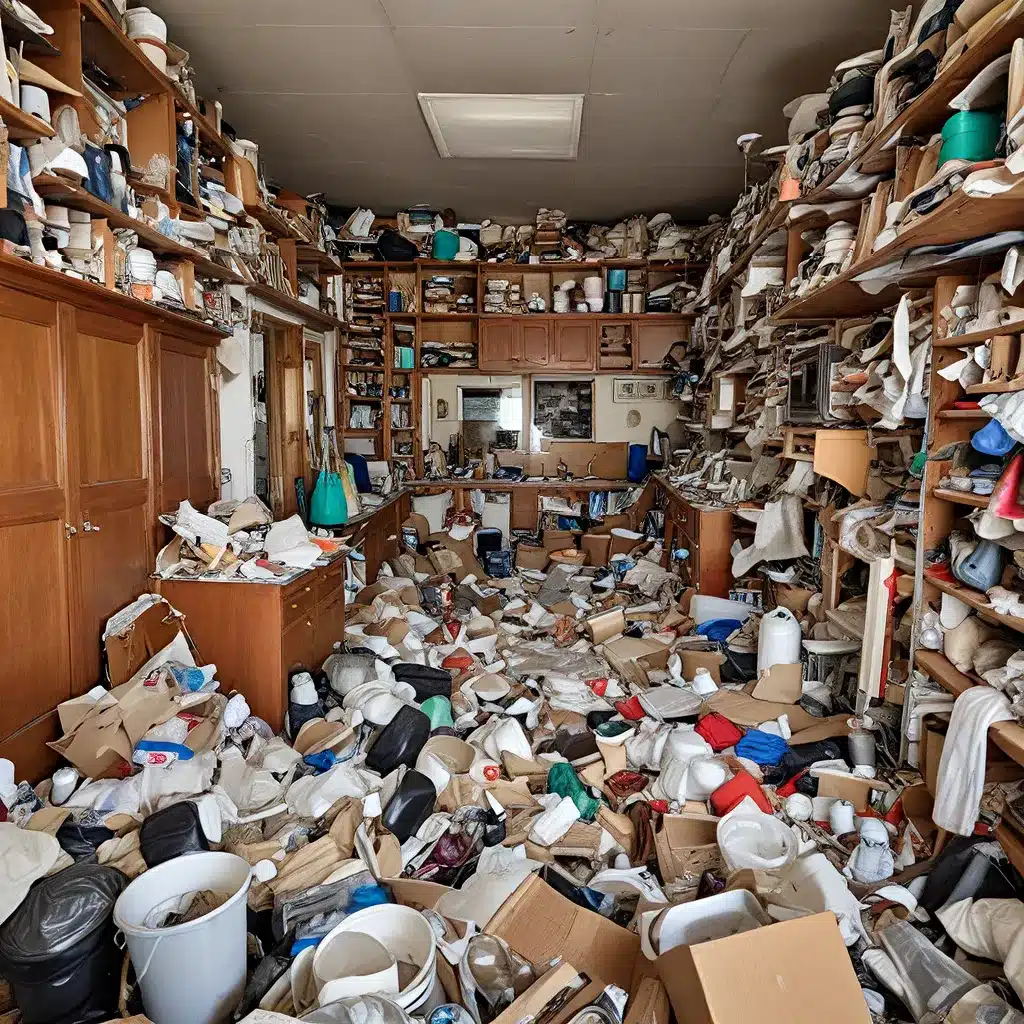The idea of tackling an extreme hoarding situation can be downright overwhelming. Whether it’s your own home that’s been slowly consumed by clutter and belongings, or a loved one’s residence that’s become nearly impassable, the mere thought of diving into that chaos is enough to make anyone’s heart race. But I’m here to tell you that there’s hope, and with the right approach, you can regain control and reclaim the space you deserve.
Understanding the Hoarding Mindset
First, let’s address the elephant in the room – or should I say, the mountains of stuff in the room. Hoarding isn’t just about being messy or disorganized; it’s a complex psychological disorder that can have deep-rooted causes. People who struggle with hoarding often develop an intense emotional attachment to their possessions, viewing them as extensions of themselves or sources of comfort. They may also experience anxiety, depression, or feelings of overwhelming guilt at the thought of letting go of these items.
It’s important to approach a hoarding cleanup with empathy and understanding. Imagine how you would feel if someone came in and started throwing away your most cherished belongings – it would be devastating. That’s why it’s crucial to work with the individual, not against them, and to provide support and guidance throughout the process.
Where to Start: The Decluttering Journey
Okay, let’s get down to the nitty-gritty. Where do you even begin when faced with an extreme hoarding situation? The key is to take it one step at a time, and to prioritize your safety and well-being above all else.
Extreme Hoarding Clean Outs, a leading hoarding cleanup company, suggests starting with the most critical areas of the home. “Focus on clearing pathways, ensuring all exits are accessible, and removing any hazardous or perishable items,” they advise. “This will help create a safer environment and give you a sense of progress, which can be incredibly motivating.”
Once the immediate safety concerns have been addressed, it’s time to start sorting and categorizing the remaining items. This can be a daunting task, but breaking it down into manageable chunks can make a big difference. “Try tackling one room or even one small section at a time,” recommends the Reddit thread. “Don’t get bogged down by the enormity of the whole project; focus on one area and build momentum from there.”
Letting Go: The Emotional Hurdle
Ah, the dreaded part – actually deciding what to keep and what to let go. This is where the emotional aspect of hoarding can really come into play. Remember, the attachment the hoarder feels towards their belongings is real and valid, even if it may seem irrational to an outside observer.
Gently guide the individual through the process, offering empathy and support. “Acknowledge their feelings and validate their concerns,” suggests Pro Housekeepers. “Avoid being judgmental or dismissive, as this can further entrench their resistance to letting go.”
Instead, focus on the potential benefits of a decluttered space. Imagine the sense of freedom and calm that can come from having a clean, uncluttered home. Highlight how this can improve their quality of life, their mental and physical health, and even their social connections. Offer to help them find new homes for items they’re struggling to part with, whether that’s through donation, resale, or passing them on to loved ones.
Maintaining the Progress
Whew, you’ve made it through the initial decluttering process. But the real challenge lies in maintaining the progress and preventing the hoarding from creeping back in. This is where ongoing support and lifestyle changes become crucial.
Encourage the individual to develop new habits and routines that support a decluttered lifestyle. This could include regular cleaning and organizing sessions, setting boundaries around new purchases, and finding healthy ways to cope with the urge to hold onto things.
It’s also important to build a strong support network. Reach out to family members, friends, or even a professional therapist who specializes in hoarding disorders. Having someone to hold you accountable and provide encouragement can make all the difference.
And remember, this is a journey, not a destination. Setbacks and relapses may happen, but that’s okay. The key is to stay compassionate, patient, and focused on the progress, no matter how small it may seem.
Seeking Professional Help
If the hoarding situation feels overwhelming or you’re unsure of how to proceed, don’t hesitate to seek professional help. Cleaning services that specialize in hoarding cleanup can be an invaluable resource, providing not just the physical labor, but also the emotional support and expertise needed to navigate this complex challenge.
These experts have been trained to handle hoarding situations with the utmost care and sensitivity. They can assess the scope of the problem, develop a customized plan of action, and guide the individual through the entire process. Plus, they can connect you with additional resources, such as mental health professionals, organization specialists, and support groups.
Remember, you don’t have to face this alone. By reaching out for help and taking it one step at a time, you can reclaim your space, your peace of mind, and your life. It won’t be easy, but I have every confidence that you can do this.
So take a deep breath, gather your courage, and let’s get started on your journey to a clutter-free, stress-free home. The rewards waiting for you on the other side are more than worth it.







